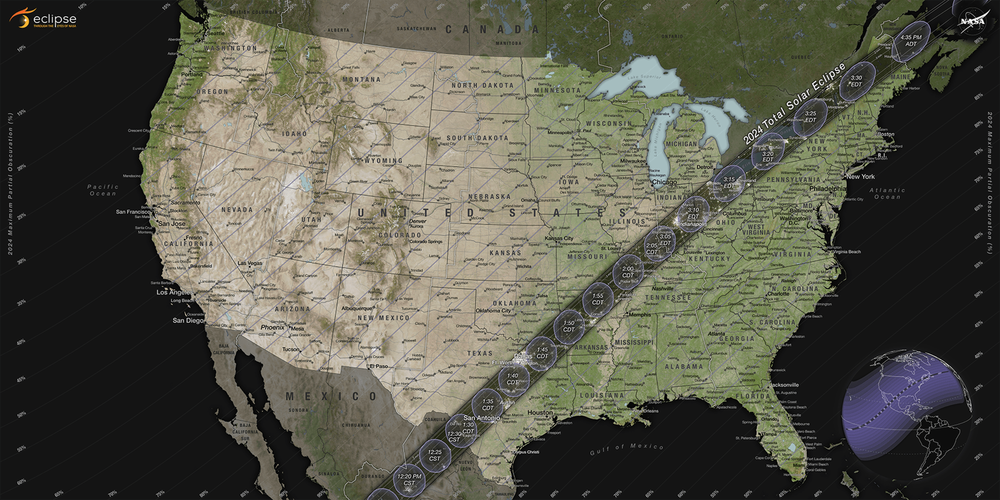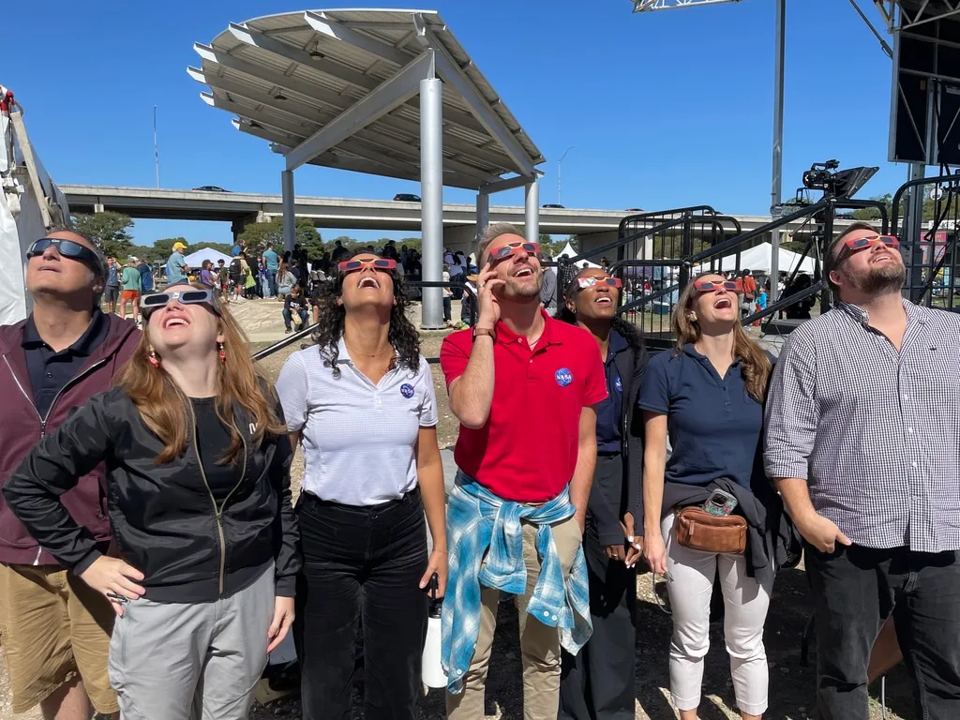Through NASA’s Eyes: Johnson Readies for Total Solar Eclipse Celebration
On Monday, April 8, a solar eclipse will cross North America, passing over Mexico, the United States, and Canada. Anyone viewing the eclipse in its path of totality – a 115-mile-wide swath of the country stretching from Texas to Maine – will see the Moon completely block out the face of the Sun for about four minutes and 30 seconds. A total eclipse will not be seen again in the contiguous United States until August 2044.

NASA’s Johnson Space Center is not in the path of totality, but employees can still get a great view of this stellar event, with NASA Science projecting that about 93% of the Sun will be covered by the Moon at the height of the eclipse. Johnson employees, their friends, and their family members are invited to join an awe-inspiring eclipse viewing event in front of building 1 and enjoy this unique opportunity together.
From 12:30 to 2:00 p.m., employees and their guests can pick up a pair of solar eclipse glasses and enjoy music, photo ops, and giveaways of special prizes like NASA swag, private tours of Johnson facilities, Starport gift cards, and more. They can also engage with NASA programs and Johnson teams at tables around the building 1 horseshoe area. The Office of STEM Engagement will lead family-friendly activities, including solar bead bracelet making, design-your-own rocket fins, and a Moon dust mitigation simulation involving balloons and foam beads. NASA astronaut Michael Finke will make an appearance, and Center Director Vanessa Wyche will be on hand to greet the crowd before the premier eclipse viewing at 1:30 p.m. Food trucks will also be available to help satisfy lunchtime cravings. Employees can find full event information here.
In the event of inclement weather, the event will be hosted in the Teague Auditorium lobby and will feature live NASA TV coverage of the eclipse, in addition to family-friendly engagement opportunities.

For those unable to join the eclipse celebration, the NASA Science website offers a wealth of information about safely viewing this celestial event and other eclipse resources.
- Traveling on eclipse day? Use the “Where and When” tool to check projected visibility in your area.
- Looking for eye safety tips? Review these safety guidelines before you head to your viewing location.
- Wondering what it is like to experience an eclipse? Check out this comprehensive guide to eclipse phases and planning.
NASA also collaborated with Peanuts to create fun and engaging solar science activities and eclipse resources for students ages 4-13.
NASA will host live coverage of the eclipse on NASA+, the agency’s website, and the NASA app beginning at 1 p.m. NASA will also stream the broadcast live on its Facebook, X, YouTube, and Twitch social media accounts, as well as have a telescope-only feed of eclipse views on the NASA TV media channel and YouTube.
To learn more about the total solar eclipse, visit: go.nasa.gov/Eclipse2024







